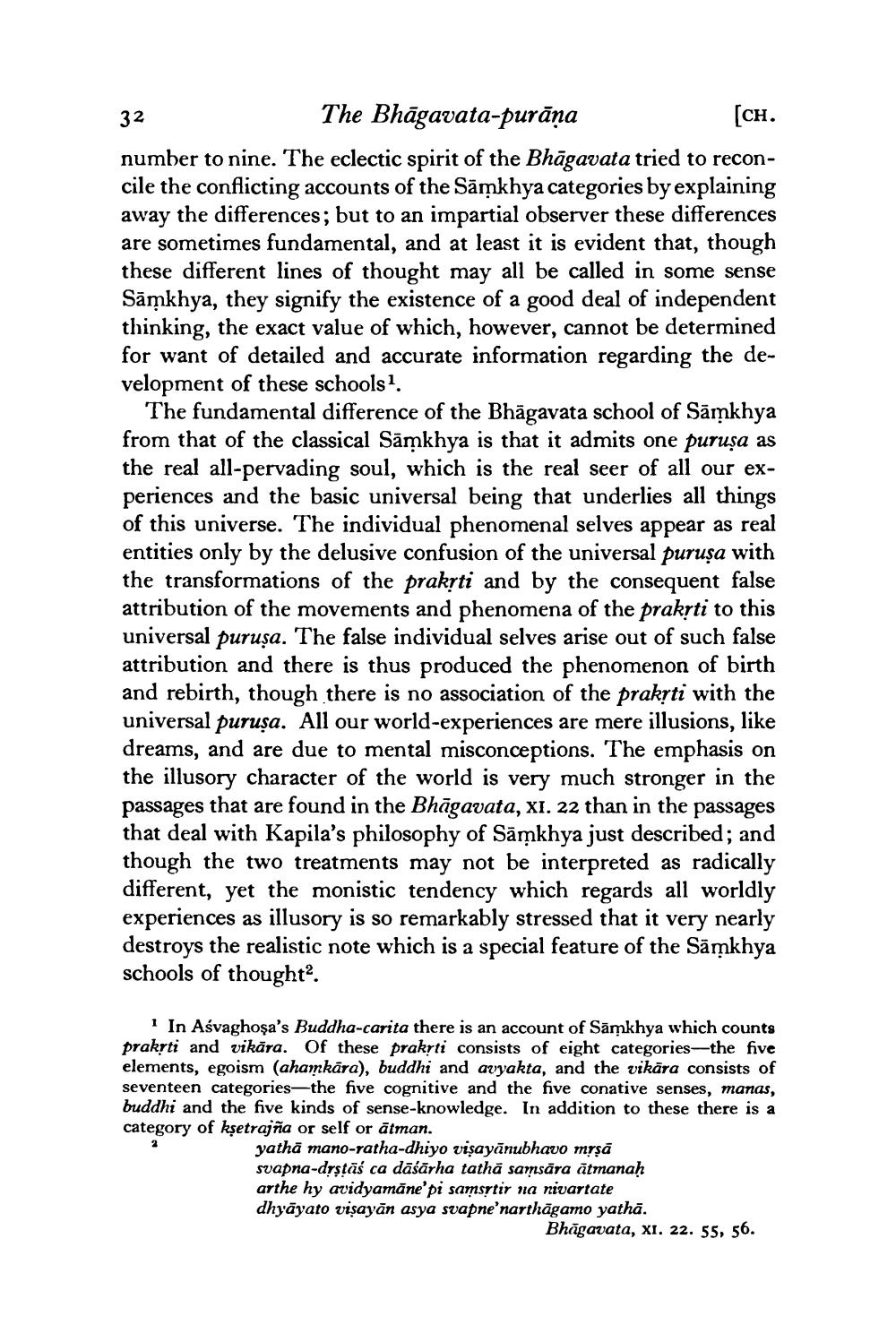________________
32
The Bhagavata-purāṇa
[CH.
number to nine. The eclectic spirit of the Bhāgavata tried to reconcile the conflicting accounts of the Samkhya categories by explaining away the differences; but to an impartial observer these differences are sometimes fundamental, and at least it is evident that, though these different lines of thought may all be called in some sense Samkhya, they signify the existence of a good deal of independent thinking, the exact value of which, however, cannot be determined for want of detailed and accurate information regarding the development of these schools1.
The fundamental difference of the Bhāgavata school of Samkhya from that of the classical Samkhya is that it admits one puruşa as the real all-pervading soul, which is the real seer of all our experiences and the basic universal being that underlies all things of this universe. The individual phenomenal selves appear as real entities only by the delusive confusion of the universal puruşa with the transformations of the prakṛti and by the consequent false attribution of the movements and phenomena of the prakṛti to this universal purușa. The false individual selves arise out of such false attribution and there is thus produced the phenomenon of birth and rebirth, though there is no association of the prakṛti with the universal purușa. All our world-experiences are mere illusions, like dreams, and are due to mental misconceptions. The emphasis on the illusory character of the world is very much stronger in the passages that are found in the Bhāgavata, XI. 22 than in the passages that deal with Kapila's philosophy of Samkhya just described; and though the two treatments may not be interpreted as radically different, yet the monistic tendency which regards all worldly experiences as illusory is so remarkably stressed that it very nearly destroys the realistic note which is a special feature of the Samkhya schools of thought2.
1 In Asvaghosa's Buddha-carita there is an account of Samkhya which counts prakṛti and vikāra. Of these prakrti consists of eight categories-the five elements, egoism (ahamkāra), buddhi and avyakta, and the vikāra consists of seventeen categories-the five cognitive and the five conative senses, manas, buddhi and the five kinds of sense-knowledge. In addition to these there is a category of kṣetrajña or self or ātman.
yatha mano-ratha-dhiyo viṣayānubhavo mṛṣā svapna-dṛṣṭāś ca dāśārha tatha samsāra ātmanaḥ arthe hy avidyamāne'pi samsṛtir na nivartate dhyāyato viṣayān asya svapne'narthāgamo yathā. Bhagavata, XI. 22. 55, 56.




